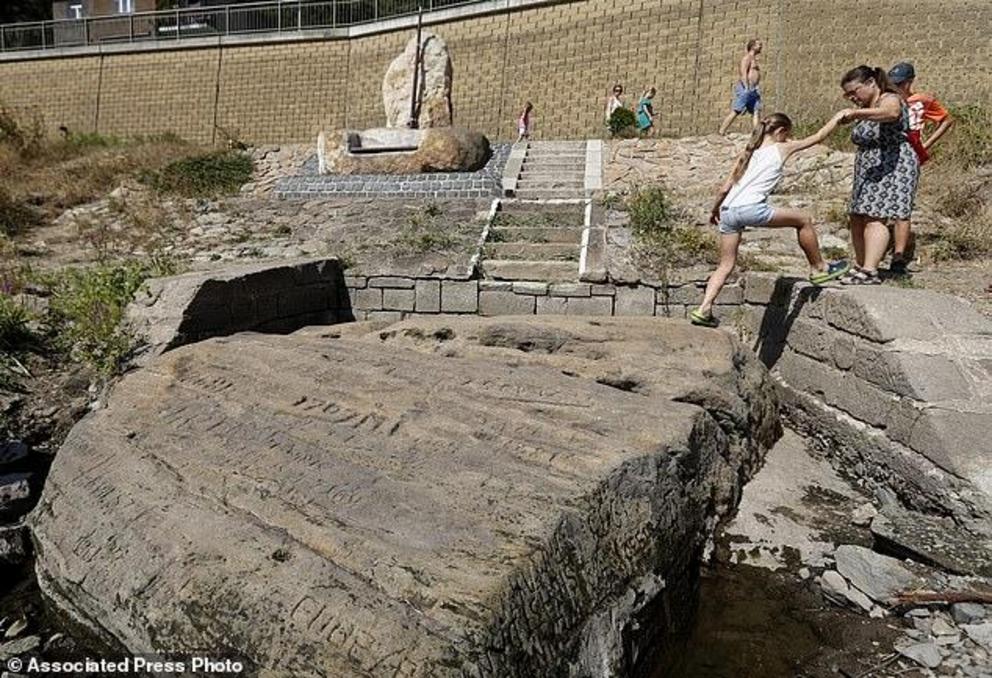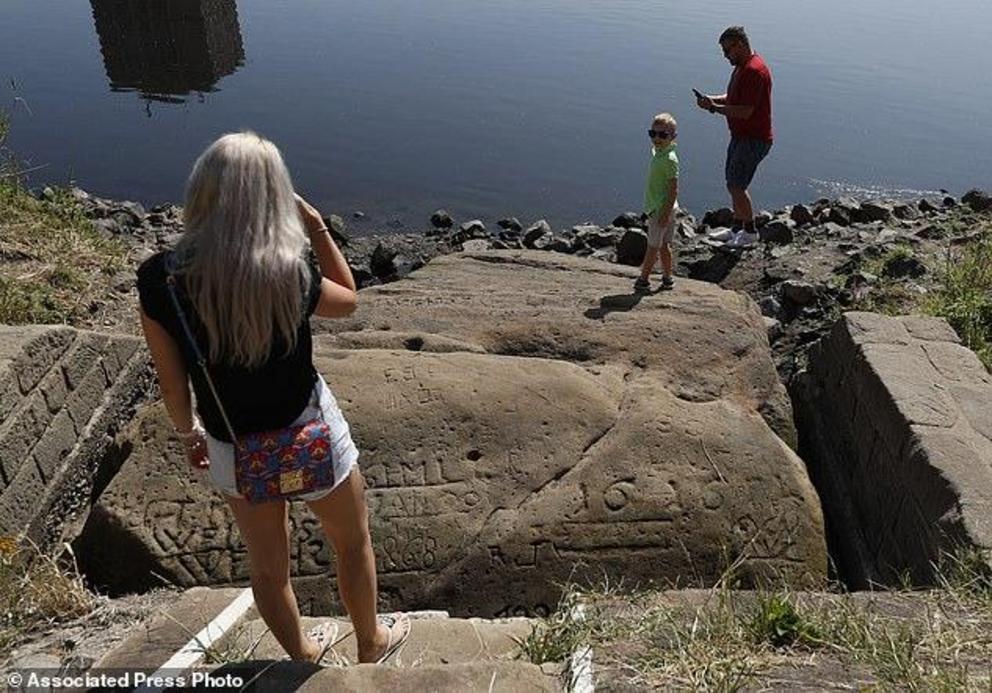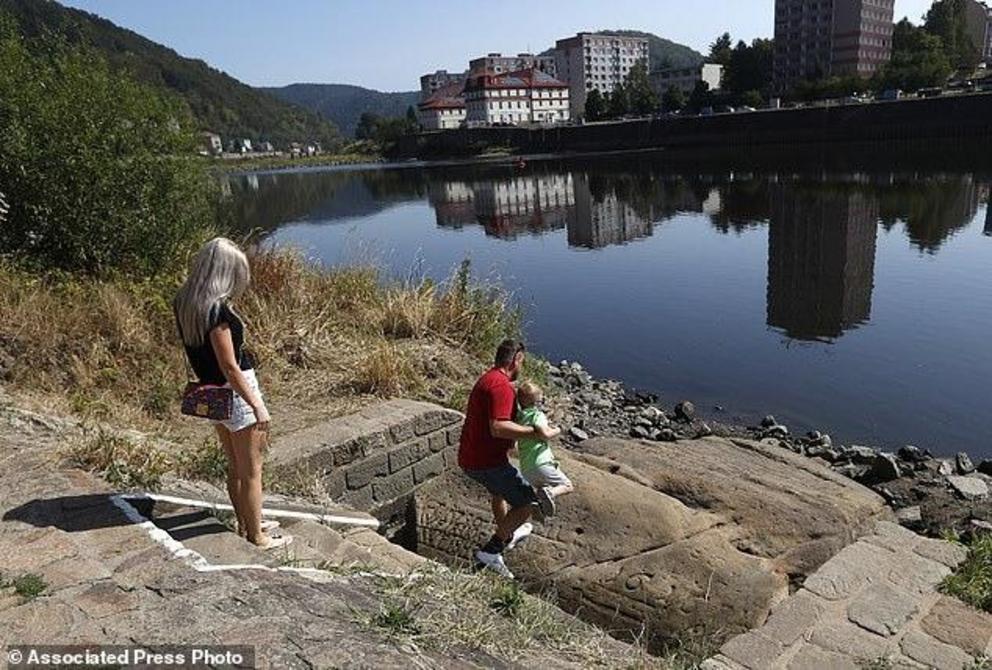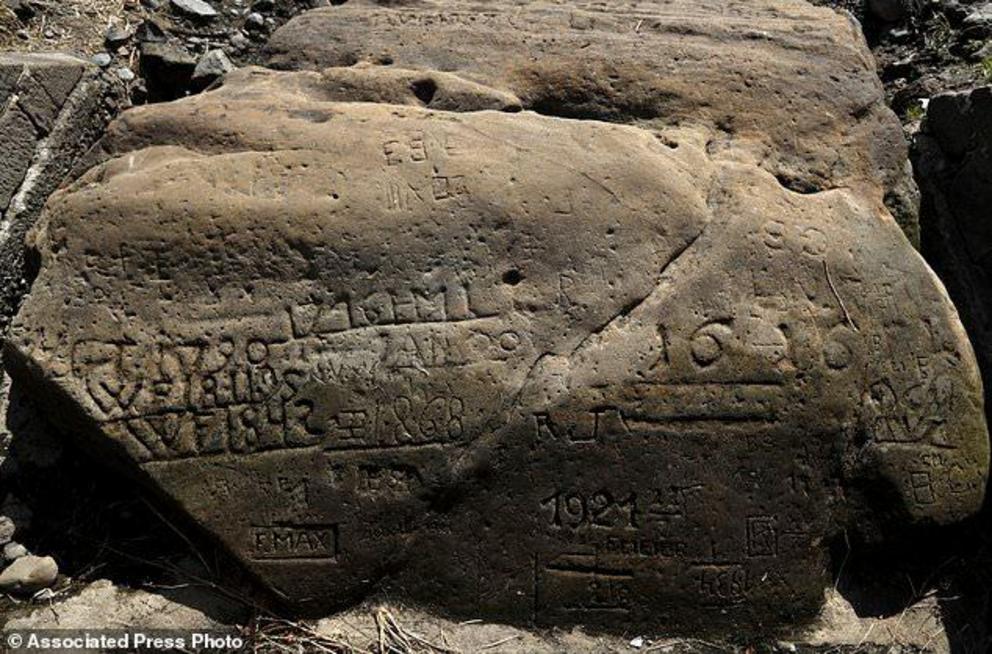European droughts reveal hidden 15th century messages carved into river rocks
- Boulders known as 'hunger stones' are reappearing in the Elbe River
- River that begins in Czech Republic then crosses Germany into the North Sea
- One message carved in 1616 used to warn people that hard times were coming
Droughts across Europe has caused hidden messages carved on rocks to warn of 'hard times ahead' to reappear.
Known as 'hunger stones', they are reappearing in the Elbe River.
Over a dozen of the hunger stones, chosen to record low water levels, can now be seen in and near the northern Czech town of Decin near the German border.
On of the so called 'hunger stones' exposed by the low level of water in the Elbe river is seen in Decin, Czech Republic, Thursday, Aug. 23, 2018. The low level of water caused by the recent drought has exposed some stones at the river bed whose appearances in history meant for people to get ready for troubles. They are known as the 'hunger stones' and they were chosen in the past to record low water levels.
The low water levels in the river that begins in the Czech Republic then crosses Germany into the North Sea has exposed stones on the river bed whose appearances in history used to warn people that hard times were coming.
The oldest water mark visible on the river dates to 1616.
That stone, is considered the oldest hydrological landmark in Central Europe, bears a chiseled inscription in German that says: 'When you see me, cry.'
On other rivers, hunger stones go back to the 15th century, and inscriptions from 1417, 1473, 1616, 1654 and 1666 have been found.

People visit one of the so called 'hunger stones' exposed by the low level of water in the Elbe river in Decin, Czech Republic, Thursday, Aug. 23, 2018.
In the second half of the 19th century, they entered the general consciousness after mentions in newspapers.
One of the earliest recording mentions was on 30 August 1876, when the Teplitzer Zeitung wrote: 'The Elbe offers as a result of the prolonged drought, a sad sight, as he has not occurred since 1842: everywhere stand out the hunger stones and the meter level at the bridge over the Elbe is not from the water more touched.

On of the so called 'hunger stones' exposed by the low level of water in the Elbe river in Decin, Czech Republic, Thursday, Aug. 23, 2018. The low level of water caused by the recent drought has exposed some stones at the river bed whose appearances in history meant for people to get ready for troubles.
The Elbe stone was first spotted in 1918, and became exposed during a period of low water coincident to the wartime famines of World War I.
also known in German as 'Hungerstein', previous research linked them to periods of drought.
The extremely low water level of the Elbe currently allows so-called 'Hungersteine' to be recorded in the Saxon part of the river.
'Hungersteine' are striking rock formations, stones or plates in rivers, which are only visible at particularly low water levels and bear dates or inscriptions.

The extremely low water level of the Elbe currently allows so-called 'Hungersteine' to be recorded in the Saxon part of the river.

This stone was first spotted in 1918, and became exposed during a period of low water coincident to the wartime famines of World War I.

